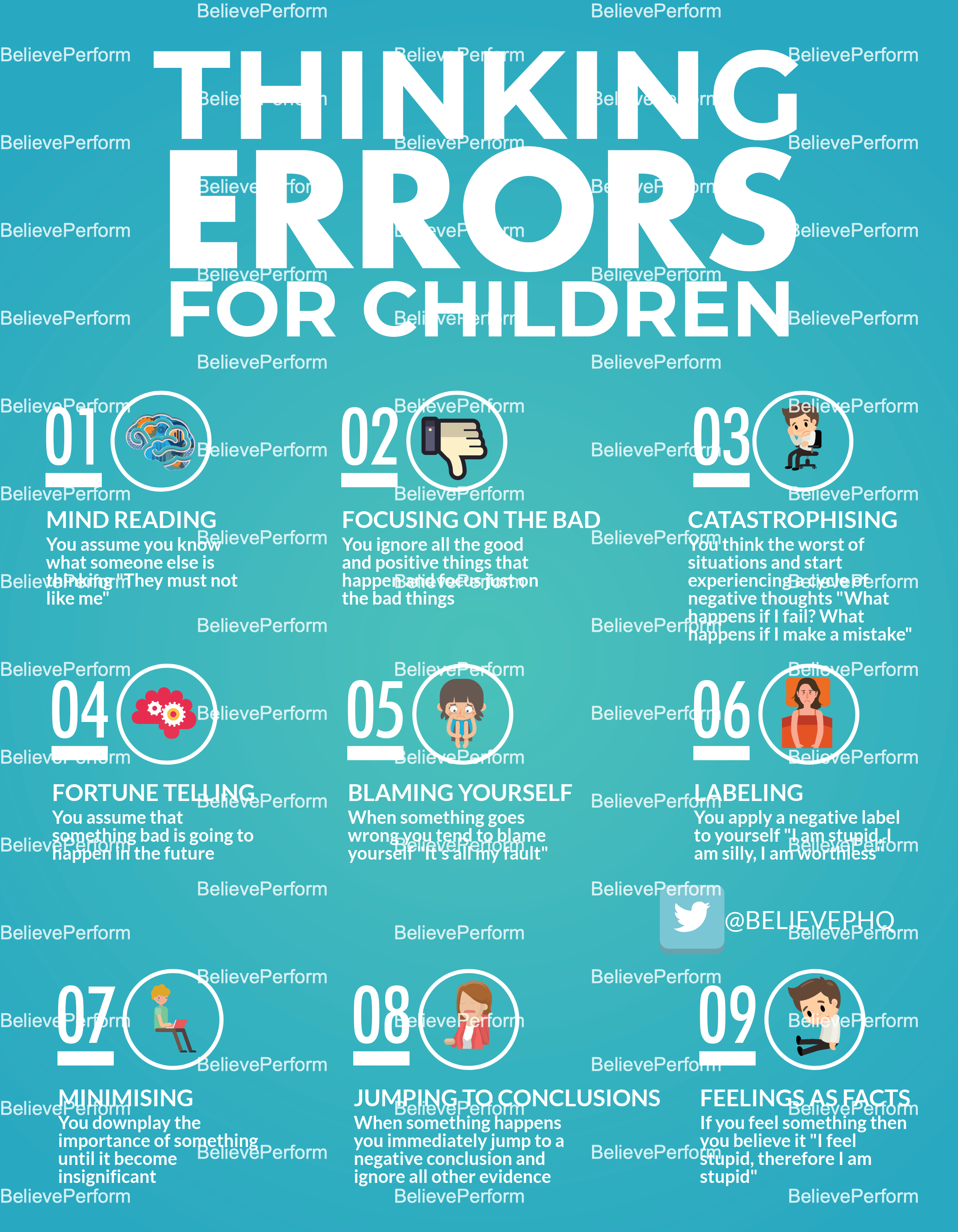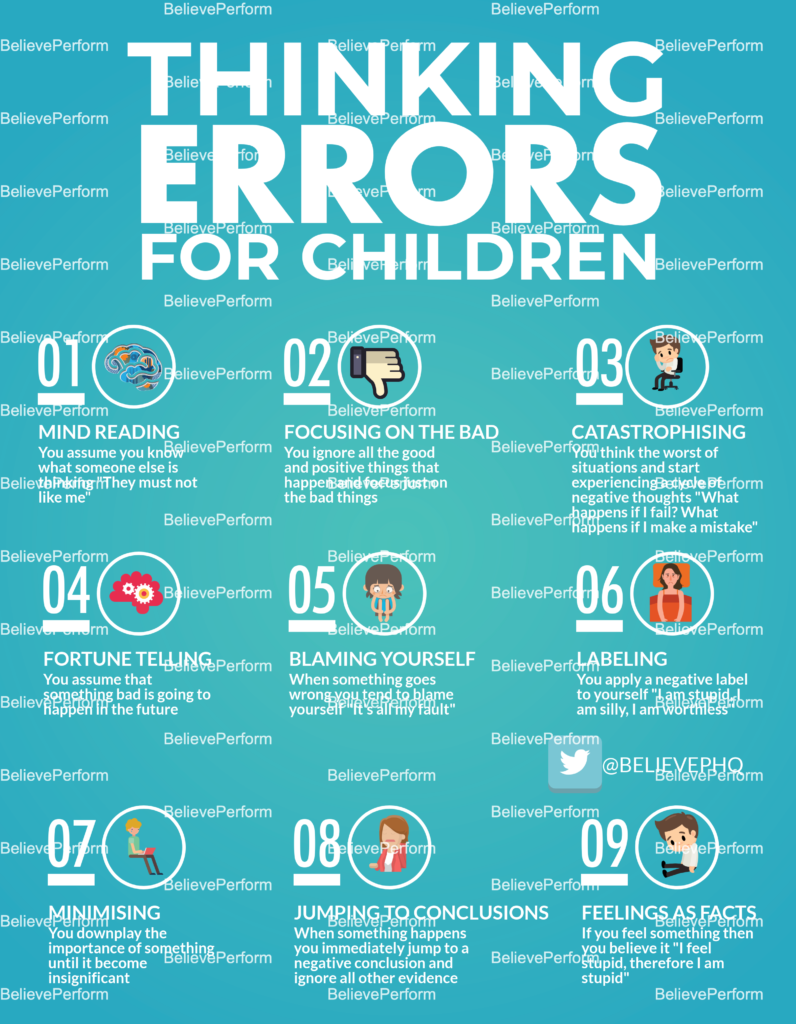Children can internalise negative feelings that may hinder them from being able to connect with their peers freely and indulge in play with others. By recognising the most common negative thoughts we as adults can help guide them out of these negative feelings to improve their well-being.
In this mental health infographic we look at common thinking errors for children.
Categories: Coping Skills Sign UpThis product is a digital download. Available to download for free with a membership.

 " />
" />